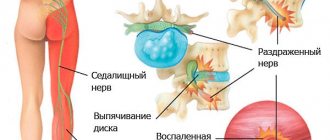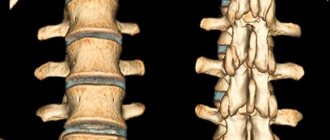Most areas of psychotherapy work with mental disorders, affecting the psyche. Various addictions, sleep or eating disorders, schizophrenia, behavioral deviations are their area of activity. And only a few are able to have a therapeutic effect not only on the soul, but also on the body. Asthenia, vegetative-vascular dystonia, obesity, diseases of the musculoskeletal system and respiratory organs, speech and hearing defects - professionally organized dance movement therapy (TDT) can cope with all this set.
What it is
Dance therapy is a branch of psychotherapy that focuses on creative self-expression through dance and movement, which promotes the integration of cognitive, emotional, social and physical aspects of a person's life. A new method of treating soul and body, which evokes only positive emotions in patients and allows them to get rid of many problems.
Even in primitive society, dancing had socio-psychological importance, performing several functions at once:
- ritual (established a connection with higher powers);
- communicative (transferred knowledge, facilitated communication between different groups);
- identification (reflected belonging to a certain tribe);
- expressive (allowed self-expression);
- recreational (relieves emotional and physical stress).
At the beginning of the 20th century, many areas of psychotherapy began to consider dance as a possible additional method to the main course of treatment for various disorders and pathologies:
- psychoanalysis - as a technique for expanding consciousness;
- individual psychology - as the education of an innate “social feeling”;
- analytical (complex) psychology - as working with the unconscious;
- body-oriented psychotherapy - as a method of treating neuroses through bodily contacts.
Dance movement therapy became a separate area only in 1946. American dancer Marion Chase, noticing how choreography lessons had a beneficial effect on students, suggested conducting similar classes in the hospital. She worked with psychotic, mute patients. She taught them to interact in a group, express feelings openly, and communicate. The success was obvious.
1966 is the year the American Dance Psychotherapy Association was born.
Today, TDT is an independent, full-fledged area with its own set of methods and techniques that allow achieving results in the treatment of patients. It is used not only for adults who find themselves in a difficult life situation and are in a state of stress or depression. There are programs for pregnant women, children, teenagers, and the elderly. There are family forms of work. Prescribed as an auxiliary tool for various diseases and disorders.
Internet
A prerequisite for conducting an online consultation is the presence of an Internet connection in the apartment. Today, the most optimal are: access via an Ethernet cable.
Ethernet – dedicated line. It is used to connect a computer to the network directly or through a Wi-Fi router. The capacity of such a channel is higher than in the case of ADSL or television cable. Data transfer speed from 50 Mbit/s in both directions - both from the computer to the server and back.
Connection via cable TV. This is the type of access that is provided according to the DOCSIS standard - data transmission via television cable. It is usually used if there are no Internet providers in the house. With its help you can get speeds from 27 to 50 Mbit/s. To set up access, you must have cable television in your home and a special modem.
FTTB is the technology that is currently most widespread in the civilized world. The principle of operation is simple: a switch is placed in the entrance, which is connected to the station of the Internet service provider. A twisted pair cable is installed into the apartment, which is connected to a PC or a special router. The main advantage is the favorable ratio between Internet speed and cost. The maximum possible speed is 1 Gbit per second.
GPRS, 3G, LTE. Since almost every person today has a modern smartphone, mobile Internet is widespread. It is pointless to discuss its advantages in detail due to their obviousness; the main advantage is the ability to have an Internet connection literally “at hand”; the main disadvantage is limited limits. Over the past years, the speed has increased significantly: if previously GPRS and 3G were in use, today they have been replaced by 4G technology. The maximum speed of the latest LTE is 300 Mbit (theoretically); in reality it is usually significantly lower.
The essence
The main goal of dance and movement therapy is to reveal not only a person’s creative potential, but also inner thoughts, motivations, and fears. Relieves stiffness, complexes, phobias, self-doubt, low self-esteem and many other, more serious disorders. To implement all these plans, a number of tasks are sequentially performed at different stages of working with the patient:
- realize the abilities and capabilities of your own body;
- improve social skills;
- feel, express your own “I” in the language of dance;
- learn to establish connections between movements, feelings and thoughts.
There are several basic principles on which dance-movement psychotherapy is based.
The principle of interconnection
You cannot heal the body if the soul is sick, and vice versa. TDT is aimed at their simultaneous recovery.
Principle of socialization
With the help of dance you can establish communication: with yourself, the world around you and other people.
Principle of integrity
TDT works immediately with all components of the “thoughts-feelings-behavior” triad famous in psychotherapy.
Development principle
The body is a living, constantly changing and improving organism, and not a static object.
The principle of creativity and self-realization
A person's internal resources should be used as a motivator and source of vitality.
During the classes, patients become more relaxed. By using non-verbal methods of self-expression, they extract from the subconscious problems that they sometimes cannot communicate about due to some circumstances, and sometimes they themselves are not aware of their existence. This helps psychotherapists make a correct diagnosis and select optimal treatment methods.
A technique that can be used to conduct an online dance and movement therapy session:
1. Personal computer.
Advantages:
- It is connected to the wired Internet, which makes the video communication signal the most stable and fast.
- Working on a computer allows the dance therapist to broadcast music to the client in good sound and at sufficient volume. This feature is available in the ZOOM app for PC and laptop users only.
- Availability of a large screen (compared to a telephone). This allows the therapist to examine in more detail the work of the client’s body, and also makes it easier for the client to perceive the material given by the therapist.
Flaws:
- Stationarity of the computer. If the therapist's family is at home, privacy issues may arise (for example, if the Internet cable is installed in the kitchen or family room). Thus, the therapist will no longer be able to ensure the confidentiality of the consultation and will be forced to cancel it or reschedule it for another time. It will also be inconvenient if there is not enough space in the room where there is an Internet connection and the therapist cannot fit full-length into the video communication window.
2. Laptop.
Advantages:
- The ability to connect to a wired Internet and thereby ensure the most stable connection.
- The ability to broadcast music from the therapist’s playlist in good quality and at sufficient volume. This feature is available in the ZOOM app for PC and laptop users only.
- Big screen.
- Mobility. The laptop can be moved to any convenient location and ensure that the dance therapist or client is completely visible in the video chat window.
Flaws:
- When using a Wi-Fi network to connect to the Internet, interruptions in communication may occur, which leads to the client and therapist leaving the aligned therapeutic process.
- There is a high probability that during reflection the voice of the therapist or client will not be heard well enough, which can cause difficulty in the dialogue.
- If the laptop battery runs out and the therapist or client does not have access to a charger, the session will not take place.
3. Tablet.
Advantages:
- Mobility. Provided that there is a special stand case, the tablet can be placed anywhere in the apartment.
- Also (for the client), if a SIM card is inserted into the tablet, then you can take it with you outside and have a session, for example, in a park. the main thing is to have a good connection.
Flaws:
- Tablet use of mobile network and Wi-Fi. Since they are not always stable, this can affect the quality of the connection and cause the session to be interrupted.
- In order to play music, the client must have additional devices: a smartphone or a second tablet and a portable Bluetooth speaker.
- If the tablet's battery runs out and the therapist or client does not have access to a charger, the session will not take place. And if the charger is still found, but the tablet has already turned off, then restoring the minimum charge level to turn on the tablet can take up to 20 minutes.
4. Smartphone.
Advantages:
- Mobility. Provided that there is a special stand case, the smartphone can be placed anywhere in the apartment.
Flaws:
- Small screen. The client or therapist, if he has poor vision, will be forced to look closely at the screen.
- Smartphone use of mobile network and Wi-Fi. Since they are not always stable, this can affect the quality of the connection and cause the session to be interrupted.
- In order to play music for the client, it is necessary to have additional devices: a second smartphone or tablet and a portable Bluetooth speaker.
- If the smartphone's battery runs out and the therapist or client does not have access to a charger, the session will not take place. And if the charger is still found, but the smartphone has already turned off, then restoring the minimum charge level to turn on the tablet can take up to 20 minutes.
- For a more comfortable installation of your smartphone, it is better to buy a tripod.
Programs and applications : Zoom; What's app; Skype; Face time. We used Zoom and What's app to work with clients.
Indications and contraindications
Indications:
- asthenic syndrome;
- vegetative-vascular dystonia;
- impaired metabolism;
- overweight, obesity, psychogenic overeating;
- diseases of the musculoskeletal and respiratory systems at the initial stage;
- apathy, neuroses, increased conflict, negativism;
- emotional, behavioral disorders;
- phobias, complexes, low self-esteem;
- stress, depression;
- the presence of a muscular shell;
- autism;
- Disabilities, mental retardation, hearing and speech disorders in children.
It is especially often used for neuroses and depressive states, as it contributes to the overall psychological well-being of the individual, increases self-acceptance, autonomy, relieves tension, clarifies life values, and sets up a positive change in interpersonal relationships.
Contraindications:
- cerebrovascular accidents;
- productive psychopathological symptoms: delusions, hallucinations, catatonic disorders;
- suicidal tendencies;
- gross behavioral violations;
- diseases accompanied by acquired dementia: Alzheimer's, Hallervorden-Spatz, Parkinson's, Pick's, anoxia, Huntington's chorea, spinocerebellar ataxia;
- angina pectoris, cardiosclerosis, hypertension;
- shortness of breath, bronchial asthma;
- serious diseases and injuries of the spine.
Kinds
Clinical TDT
It is used not only to eliminate mental problems, but also to treat physiological diseases. Acts as an auxiliary method of therapy. Most often prescribed for children with hearing or speech impairment, with disabilities and mental retardation, for adults - when diagnosing an astheno-neurotic condition, vegetative-vascular dystonia, diseases of the musculoskeletal system and respiratory organs.
Psychotherapeutic TDT
Solves specific problems, eliminating neuroses, increased conflict, negativism, stressful conditions, obsessive thoughts, phobias and addictions. Involves various forms of work: group, individual, family. Often uses psychoanalytic methods. Requires a fairly long period to achieve a sustainable result.
Psychological TDT
Absolutely anyone who wants to loosen up, throw out negative energy, and improve their social skills can attend these classes. It is not necessary to suffer from any specific problems. It is usually carried out in groups. It is used by educational psychologists as a method of psychocorrection for minor personality and behavioral deviations in children and adolescents.
Each type can use techniques and methods borrowed from other movements and directions:
- psychoanalysis;
- psychodrama;
- existential-humanistic psychotherapy;
- transpersonal therapy.
Dance movement therapy also has its own trends:
- integrative (A. Girshon);
- “5 rhythms” - combination with meditative techniques (G. Roth);
- contact improvisation (S. Paxton).
Most often it is used in close collaboration with other areas of psychology and psychotherapy.
Disadvantages of conducting dance movement therapy online:
1. If there are problems with the Internet connection, the consultation is jeopardized, because an interruption in the signal distorts the picture, cuts off the sound of the music, and throws you out of tune with the client.
2. The client does not always have enough space in the apartment to stand at the required distance from the camera, and knee-deep legs are sometimes not visible.
3. A familiar home environment may have certain disadvantages in consultation, since the client may have strong psychological “anchors” in his familiar space, fixing him in a certain psychological state. For example, for some people, familiar domestic activities can have a depressive effect because they are associated with past conflicts and negative emotions. At the same time, a psychologist’s office can introduce a factor of novelty into a counseling situation and plays the role of a “change of scenery and plot.”
4. If the therapist conducts a consultation from a tablet or smartphone, then the Zoom application does not provide the ability to stream music from the same device. You have to use a speaker, which at the output, on the client’s side, negatively affects the volume and sound quality
5. The client cannot always relax and fully immerse himself in the process if family members are present at home. Mothers are especially distracted by their children.
6. Lack of direct personal contact between the dance therapist and the client, which in itself plays a very important role. The very feeling of the physical presence of a person nearby, ready to support and help, is, as a rule, therapeutic and sedative. At the same time, the lack of personal contact narrows the possibilities of using some very effective techniques and exercises.
Features of technical support for online consultation in TDT
Stages of treatment
1. Awareness
The main task is that the patient, through dance, must realize who he really is, what he wants, his desires and values, feelings, needs, fears. In parallel, the same work is done with the body: tracking breathing, honing movements, monitoring pulse and blood pressure.
2. Expression
After awareness, the patient learns to express his emotions, feelings and desires in dance. He can express with his body what he cannot express in words. This relieves psychological and muscle tension.
3. Authenticity
With the help of spontaneous improvisations, the psychotherapist is able to penetrate into the deepest and hidden corners of the patient’s subconscious. Sometimes this stage is compared in effectiveness to hypnosis.
WHO SEEKS A DANCE THERAPIST?
These are primarily people (sometimes called kinesthetics), for whom movement is a way of processing information. To fully understand something, they need to feel it in the body and find expression for it in movement. For them, movement is a way of self-expression, self-knowledge and development.
These can also be people of a different type (you can distinguish the auditory or visual type), who at a certain stage of their lives began to understand that in order to solve their problem, they need to turn to their body, learn to understand its language and enter into communication with it. dialogue.
What they can all have in common is that at a certain moment these people may feel that they are not whole, that they have lost contact with themselves or would like to change the quality of this contact. Psychologically, loss of contact with oneself is identical to loss of contact with the body.
Methods, techniques, techniques
The type of dance movement therapy determines the set of techniques with which the specialist will help the patient get rid of problems. The most common and effective techniques:
- emotional response;
- role-playing games;
- musical movement is an educational method that promotes personal development, designed for healthy people, but successfully used in working with problem children;
- free dance;
- breathing exercises;
- kinesthetic empathy;
- pair improvisation;
- structured dance;
- joint selection of music.
The success of treatment is determined by correctly selected methods. That’s why a professional approach to solving the problem is so important here. If you only need to get rid of negative energy, you can simply turn on music at home and, without hesitation, throw out all the bad things. This will also fit within the framework of this direction. More serious disorders should be dealt with by trained specialists.
Want to work out with a professional? Then you should go to the “Live Dancing” Center for Integral Dance. Founder: Alexander Girshon. Candidate of Psychological Sciences, choreographer, professional dance and movement therapist. Presenter and author of numerous trainings and master classes. He has written many works on psychology and spiritual practices: “Stories Told by the Body”, “The Little Book of the Shadow”, “Integrative Dance and Movement Therapy”.
Who needs dance therapy?
People who feel disharmony between body and spirit turn to dance therapists. This feeling arises from an early age, when the child does not feel the love of his parents and people around him, when he is haunted by a feeling of guilt for his actions, when he independently has to learn to survive in the world around him. Including if, as a teenager, a person experienced a feeling of dissatisfaction with his body. This feeling does not disappear over the years. A person seeks and finds in dance therapy awareness of himself, body and personality.
The whole process is built on the struggle of opposites or the achievements of what was considered unattainable. In addition, a person, discovering new possibilities in himself, learns to think creatively. He views himself from different points of view, begins to look at things realistically, and correctly evaluate actions and misdeeds.
Dance therapists enable students to feel the rhythm of music and express inner feelings through body movements. They evoke from the hidden corners of every person’s soul those experiences and problems that have never found solutions. They help find answers to questions that people have been looking for in vain for years.
How trainings, sessions, classes are conducted
In addition to specific principles, generally accepted, basic principles are also used for conducting sessions:
- voluntary participation;
- the “here and now” principle (the only thing that matters is what experiences the patient is experiencing at the moment);
- confidentiality;
- open expression of emotions and feelings (a trusting relationship not only between the patient and the therapist, but also between group members);
- responsibility (complete all tasks exactly);
- activity.
Most often, dance movement therapy uses a group form of classes. Usually they are lined up according to a certain pattern.
Warming up
Time: 3 minutes.
Goal: prepare the body for work, remove muscle tension.
Exercise - “Dance in parts.” Participants stand in a circle. Rhythmic music is turned on. The specialist names the parts of the body that need to be involved: head, arms, shoulders, hips, stomach, body. Next comes a discussion about who found what was easy and what was difficult. Where difficulties arise, most likely, there is a muscular shell.
Dance-motor expression
Time: 30-45 minutes.
Goals:
- awareness of one's own body;
- development of his capabilities and abilities;
- expression of feelings and emotions;
- honing social skills when working in a group.
"I'll lead you"
Participants stand in a column. The music turns on. The one who is in charge begins to move, showing various steps. The others repeat his movements. After 30 seconds, when the specialist claps, the leader goes to the end of the column. The one who was first takes on his responsibilities. Everyone must play both roles. During the discussion, everyone expresses in which position (follower or leader) they felt more comfortable.
"Fauna"
Each participant chooses any animal or bird and begins to imitate it to the music, without telling others who exactly he is copying. Before performing the exercise, the specialist sets three tasks:
- Try to make the animal recognizable to others, that is, portray it as realistically as possible.
- Find out as many other animals and birds as possible.
- Make contact with others while dancing.
While performing the exercise, the dance therapist makes observations and records the results. Why did the participant choose this particular animal? Psychologically, the difference between a wolf and a rabbit, for example, is significant. How closely does he interact with others? You can immediately distinguish between socially active and outcasts. How exactly do these contacts take place? Some express aggression through dance, others express friendliness and gentleness.
"Mirroring"
Participants are randomly divided into pairs and stand opposite each other. One shows the movements, the second performs them, mirroring them. The main thing is not to touch your partner and look eye to eye. After a minute the roles change. Within a few minutes you can create new tandems. As a result, what was liked and what was not is discussed.
"Round dance"
Participants join hands and stand in a circle. Quite rhythmic music is turned on, to which you need to move spontaneously, expressing your own “I”, bringing something individual to the collective dance. The only rule is not to open your hands. Here it is important for a specialist to see socialization skills. Someone is too passionate only about himself, not paying attention to the fact that it causes inconvenience to others (this indicates the presence of disorders). Others are shy. Still others mechanically copy the movements of their neighbor.
Hitch
Time: 5 minutes.
Goals:
- restore breathing;
- relieve tension and emotional arousal;
- consolidate the results.
Meditation. Slow, calm music comes on. On the projector screen is an illustration of a beautiful sunrise. Participants sit down randomly (preferably directly on the floor), taking a comfortable position. The dance and movement therapist pronounces affirmations about how good and calm everyone is in their souls. Audio recording may be used. At the same time, patients can move to the beat of the melody, close their eyes, even lie down - there are no prohibitions.
Analysis
This concludes the main part of the session. But not for a psychotherapist who analyzes the behavior of each participant during a lesson from the following positions:
- how he uses space and time;
- in what rhythm does he feel more comfortable?
- how he interacts with other participants;
- whether you were able to express yourself while doing the exercises;
- what is more in the movements - chaos, spontaneity or submission to some rules;
- how precise and targeted are the movements;
- what parts of the body fall out of the dance (most likely, they are hostage to the muscular shell), etc.
After a comprehensive analysis of the behavior of each participant, the therapist can reorganize the groups and schedule individual sessions.
Benefits of online dance movement therapy:
1. Anyone with Internet access can receive qualified psychological help online. At the same time, the cost of a consultation is usually less than that of a dance therapist who receives face-to-face appointments, because There is no office rental fee.
2. Save time. Young mothers, people with a busy work schedule, who do not like to spend a lot of time on the road, have the opportunity to get an online consultation right from home. To do this, you need to have a digital device (computer, laptop, tablet, smartphone) and a stable network signal.
3. The opportunity to get advice from a specialist from another city.
4. It is difficult for people whose work involves constant business trips to find time to travel to a psychologist. For them this is a significant way out.
5. People who moved to live in another culture. Psychological work carried out in the client's native language may be more productive.
6. A chance to receive qualified help during quarantine during an epidemic or pandemic.
7. The Client has the opportunity to be in his familiar home environment, in which he can feel more secure and comfortable.
8. Anonymity. No one will know that the person had a consultation (some are embarrassed about this).
Special cases
For preschool children
Dance movement therapy is often used to correct emotional and behavioral disorders in preschool children. Main goals:
- elimination of emotional discomfort;
- increased activity and independence;
- implementation of the creative component;
- elimination of secondary personal reactions: aggressiveness, hyperexcitability, suspiciousness, anxiety;
- correction of the level of self-awareness and self-esteem;
- formation of a sense of rhythm;
- improving socialization skills.
The effectiveness of therapy in working with problem children of preschool age is due to its abilities:
- identify rhythmic reflexes;
- adapt the body to auditory stimuli;
- normalize the activity of the central nervous system (hyperexcited ones calm down, slow ones become more active);
- help in eliminating speech defects through the connection of motor and speech analyzers;
- develop voluntary facial motor skills.
Recommended exercises: “Body Jazz” (there are individual and pair options), “Dance-vibration”, “Fire-ice”, “Sprout”, “Pump and inflatable doll”, “Smiling sun”, “Jungle”.
For children with speech disorders
The close connection between motor and speech analyzers allows the use of dance therapy as an auxiliary method in the work of speech therapists. Goals:
- master the “language of movements”;
- learn to express emotions through dance;
- develop perceptual and mnemonic capabilities;
- relieve muscle tension;
- expand your communication skills.
Recommended exercises: “Ri”, “Sliding movement”, “Rhythmic dictation”, “Canon”, “Theater ABC”.
For hearing impairment
Studies have shown the positive effect of dance movement therapy on the auditory analyzer. Children with hearing impairments usually have difficulty communicating verbally. Dance minimizes discomfort, removes psychological barriers, and eliminates feelings of stiffness and awkwardness. Through movement, the resource capabilities of the body are activated: in addition to working with the psyche, the hearing organs develop with constant contact with musical material.
As practice has shown, in 12 lessons lasting 1 hour, children with hearing impairments were able to get rid of not only stiffness and complexes, but also improved their physical capabilities - they began to hear better.











